General
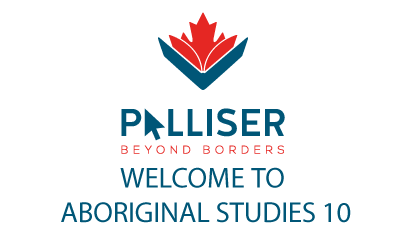



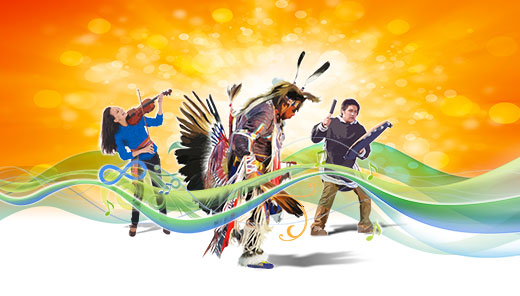
Welcome to Aboriginal Studies 10!
The focal point of Aboriginal Studies 10-20-30 is the wealth and diverse nature of Aboriginal languages and cultures. Aboriginal Studies 10 course reflects the perspectives and worldviews of Aboriginal peoples. It includes the study of traditions and history of Aboriginal peoples in Canada, and particularly in Alberta.
The four themes for the course are:
1. Origin and Settlement Patterns
2. Aboriginal Worldviews
3. Political and Economic Organization
4. Aboriginal Symbolism and Expression
*Note: There is no pre-requisite for this 5 credit course.
For this course you will need the following texts:
- Perspectives on Ideologies
Alberta Education - Program of Studies - Aboriginal Studies 10
|
|---|
Here are a few resources that may help you with your research projects. Be cautious with your internet searches. Not all sites are authentic and not all sites are up to date with their information. Please read the copyright information and request permission to use material from websites. Make sure that you cite any material taken from the internet or books. In order to build a database of credible resources, please add to the list by sending your instructor the link to your 'most amazing resource' and provide a sentence or two explaining the purpose of the website.
* Disclaimer: These links are by no means all the legitimate and valid sites available on the topic of Aboriginal peoples in Alberta, Canada, North America/South America or the world! Should you find a site that you feel should be included, please send the link to your instructor with a short synopsis of the purpose/function of the site. You will find more links to specific communities in Alberta below. You will also find relevant links in each of the lessons and/or assignments.
The links will take you to online magazines, newsletters, and Aboriginal community websites that may be valuable in your research, to supplement your assignments and for your personal interest.
Unfortunately, there is not an interactive map of the Metis communities in Alberta. The map that was provided is somewhat dated (2006) but has been included here to demonstrate the significant number of Metis communities that exist in Alberta.
Inuit live in 54 Inuit communities across the northern regions of Canada. Explore the interactive map to learn about their location, traditional name, population, and other statistics. Unfortunately, the interactive map is not working correctly so the link will take you to the database which provides a 'table-like' compilation of the data.
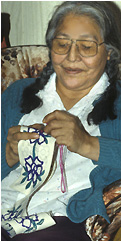
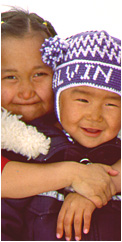
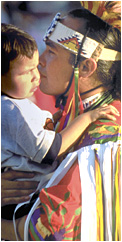
Aboriginal Studies 10 (Senior High) (2002) ©Alberta Learning, Alberta, Canada
perspective, theory, origin, migration, oral tradition, legends, stories, linguistic groups, cultural groups, traditional territories, cultural diversity, cultural environment, circular seasonal time frames, Métis, Métis settlements, mutual support, mainstream society, colonial governance.
General Outcome: Students will demonstrate an understanding of aspects of Aboriginal spirituality and worldviews.
Aboriginal Studies 10 (Senior High) (2002) ©Alberta Learning, Alberta, Canada
Related Concepts: values, spirituality, worldviews, harmony, unity, oral tradition, the cycle of life, ceremonies, religions, animate, inanimate.
The First Nations World View
People from different cultures have different ways of seeing, explaining and living in the world. They have different ideas about what things are most important, which behaviors are desirable or unacceptable, and how all parts of the world relate to each other. Together, these opinions and beliefs form a worldview, the perspective from which people perceive, understand and respond to the world around them.
People from the same culture tend to have similar worldviews. A culture’s worldview evolves from its history, which is the collective experience of the people within the culture over all the years of its existence. It also includes their beliefs about origin and spiritualism.
The traditional worldview of First Nations and Inuit peoples in Canada differs from the worldviews of people with a non-Aboriginal ancestry. You might compare a First Nations or Inuit worldview to a Euro-Canadian worldview by drawing a circle and a line. The circular First Nations worldview focuses on connections between all things, including the visible physical world and the invisible spiritual world. It sees time as always a cycle of renewal that links past and present and future. In contrast, a linear Euro-Canadian worldview lays out separations between elements of existence (spiritual and material, life and death, animal and human, living and non-living) and sees time as a progression from point to point.(Aboriginal Perspectives 2004, 66-67)
*It is important to remember that this section provides a 'snapshot' of the concept of worldview.
**Caution: In your research on worldviews, it will be imperative that you understand that worldviews are not absolutes. You will read about 'Western' vs 'Aboriginal' worldviews and authors will speak as if Aboriginal People perceive and relate to the world in one specific way and that the Western Worldview perceives and relates to the world in another specific way. This is a very broad generalization and one that would make an interesting debate! There are as many different worldviews as there are people and cultures.
General Outcome: Students will demonstrate an understanding of the political and economic organization of Aboriginal Peoples.
Aboriginal Studies 10 (Senior High) (2002) ©Alberta Learning, Alberta, Canada
Related Concepts: adaptation, interdependence, economy, economic partnership, entrepreneurship, community initiatives, alliances.
This book will provide additional information on the historical Political & Economic Organization of First Nations and Inuit.
General Outcome: Students will demonstrate an understanding of Aboriginal Art Forms, oral tradition, and literature.
Aboriginal Studies 10 (Senior High) (2002) ©Alberta Learning, Alberta, Canada
Related Concepts: cultural transmission, values, beliefs, symbolism, analogy, diversity, cultural expression, holistic, integration, interpersonal relationships.